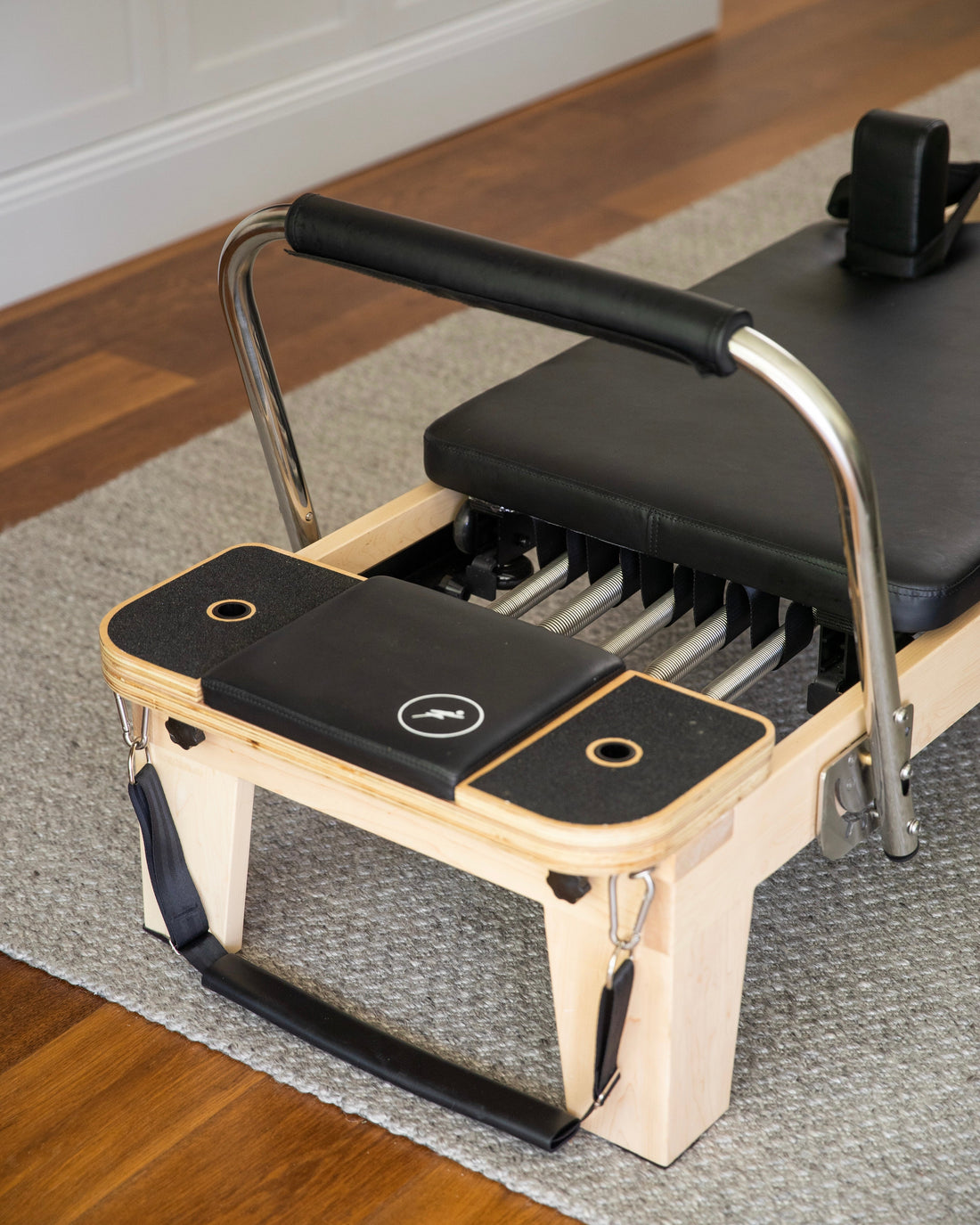Pilates is a dynamic and transformative exercise system that offers numerous benefits for strength, flexibility, and overall well-being. However, like any form of exercise, it's essential to practice Pilates with proper technique and form to maximise its effectiveness and minimise the risk of injury. In this guide, we'll explore some common mistakes in Pilates and provide practical tips on how to avoid them, empowering you to enjoy a safe and effective Pilates practice.
1. Neglecting Proper Alignment:
One of the most common mistakes in Pilates is neglecting proper alignment throughout exercises. Poor alignment can lead to muscle imbalances, strain, and discomfort, compromising the effectiveness of your workouts and increasing the risk of injury. To avoid this mistake, focus on maintaining neutral spine alignment, engaging your core muscles, and aligning your limbs correctly during each exercise. Pay attention to cues from your instructor and use mirrors or video feedback to monitor your form and alignment.
2. Holding Your Breath:
Another common mistake in Pilates is holding your breath during exercises, which can inhibit oxygen flow, increase tension, and limit your performance. Proper breathing is essential for coordinating movement, engaging the core muscles, and promoting relaxation and focus. To avoid this mistake, practice mindful breathing techniques such as inhaling through the nose and exhaling through the mouth, coordinating your breath with movement, and maintaining a steady rhythm throughout your workout.
3. Overarching or Flattening the Lower Back:
Overarching or flattening the lower back is a common mistake in exercises such as the Hundred, Roll Up, and Swan Dive, which can strain the spine and lead to discomfort or injury. To avoid this mistake, focus on maintaining a neutral spine alignment by engaging the deep abdominal muscles and lengthening through the crown of the head and tailbone. Imagine creating space between each vertebra and avoid excessive arching or rounding of the lower back during exercises.
4. Using Momentum Instead of Control:
Using momentum instead of control is a common mistake that can compromise the effectiveness of Pilates exercises and increase the risk of injury. Pilates is all about controlled, precise movements that engage the muscles from the inside out. Avoid swinging or jerking your body through exercises and focus on moving with intention, control, and fluidity. Use slow, deliberate movements to engage the stabilising muscles and maximise the benefits of each exercise.
5. Neglecting Proper Muscle Engagement:
Neglecting proper muscle engagement is a common mistake in Pilates, particularly among beginners who may struggle to activate the deep core muscles effectively. Proper muscle engagement is essential for targeting the correct muscle groups, stabilising the spine, and preventing compensatory movements. To avoid this mistake, focus on initiating movement from the powerhouse—the deep abdominal muscles, pelvic floor, and muscles around the spine. Visualise drawing the navel towards the spine and engaging the muscles of the deep core throughout each exercise.
6. Sacrificing Quality for Quantity:
Sacrificing quality for quantity is a common mistake that can compromise the effectiveness of your Pilates practice and increase the risk of injury. While it can be tempting to perform as many repetitions as possible, prioritising quality movement and proper form is essential for reaping the full benefits of Pilates. Focus on performing each exercise with precision, control, and mindfulness, rather than rushing through them or sacrificing form for the sake of quantity.
7. Ignoring Feedback and Correction:
Ignoring feedback and correction from instructors or peers is a common mistake that can hinder your progress and development in Pilates. Pilates is a practice of continuous learning and refinement, and feedback from instructors or peers can provide valuable insights into your technique and form. Embrace feedback as an opportunity for growth, be open to making adjustments, and use it as a tool to enhance your Pilates practice and achieve optimal results.
8. Pushing Through Pain or Discomfort:
Pushing through pain or discomfort is a common mistake that can lead to injury and undermine the effectiveness of your Pilates practice. While some discomfort may be normal during certain exercises as you challenge your muscles and range of motion, sharp or persistent pain is a sign of potential injury or strain. Listen to your body, honor its limitations, and modify or stop exercises if you experience pain or discomfort. Consult with a qualified instructor or healthcare professional if you have any concerns or questions about your Pilates practice.
9. Skipping Warm-Up and Cool-Down:
Skipping warm-up and cool-down is a common mistake that can increase the risk of injury and impair recovery in Pilates. Warm-up exercises help prepare the body for movement by increasing circulation, mobility, and flexibility, while cool-down exercises help promote relaxation, release tension, and prevent muscle soreness. Prioritize incorporating dynamic warm-up exercises such as spinal articulation, pelvic tilts, and shoulder rolls, as well as static stretches and relaxation techniques during your cool-down to optimise your Pilates practice.
10. Focusing Solely on Strength:
Focusing solely on strength is a common mistake that overlooks the importance of flexibility, mobility, and balance in Pilates. While Pilates is renowned for its ability to build strength and muscle tone, it also emphasises dynamic movement, flexibility, and mind-body connection. Incorporate exercises that target flexibility, mobility, and balance into your Pilates routine to create a balanced and holistic approach to fitness. Explore exercises such as stretches, mobilizations, and balance challenges to enhance your overall Pilates practice.
Conclusion: Mastering Pilates with Mindful Practice
By avoiding common mistakes and practicing Pilates with intention, mindfulness, and proper technique, you can unlock the full benefits of this empowering exercise system. Focus on maintaining proper alignment, breathing rhythmically, engaging muscles effectively, moving with control, and listening to your body's feedback throughout your Pilates practice. Embrace a mindset of continuous learning and improvement, be patient with yourself, and enjoy the journey of mastering Pilates one mindful movement at a time.

